How to Display a Katana: A Guide on Showcasing Tradition
NO AI USED This Article has been written and edited by our team with no help of the AI
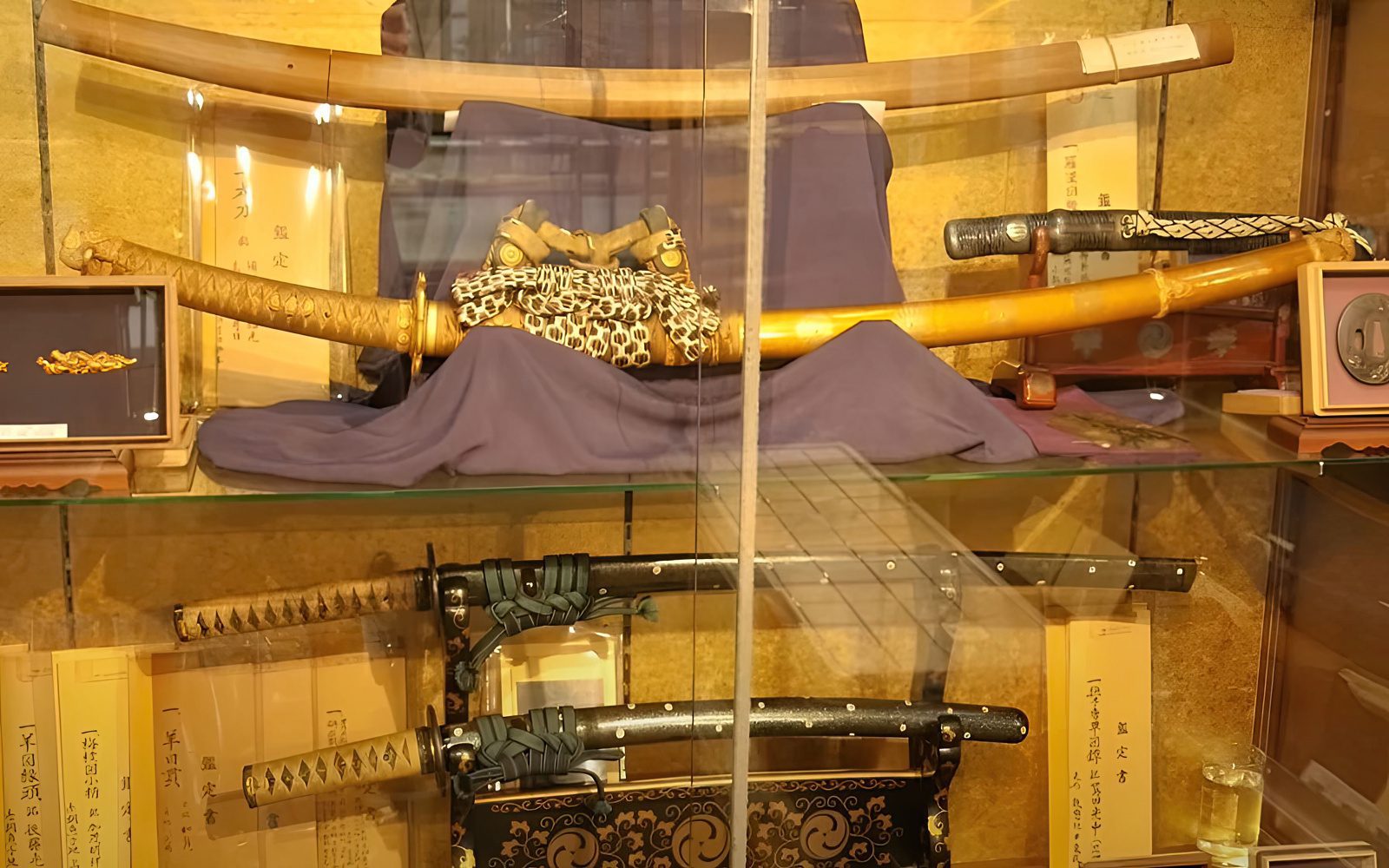
Displaying a Katana is not just a better way to preserve it, it is also to respect its place in history. To do so, there are several traditional etiquettes that need to be followed just as the historical samurai once did. In this article, we explore how to display a Katana in a home or training dojo and the reasons behind it.
Traditional Katana Display Instructions
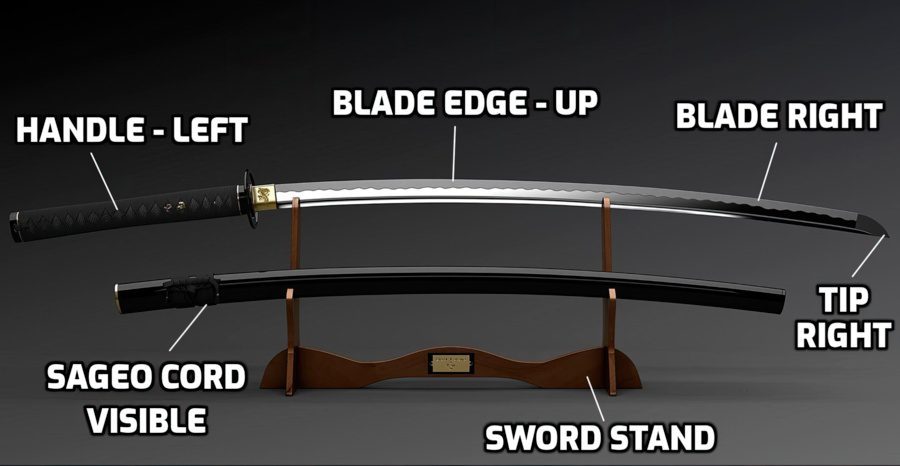
The Japanese Katana is displayed the same way as it was worn while sheathed and tucked into the traditional Japanese samurai belt.
- Blade Edge – Up
- Blade Direction – Right
- Handle Direction – Left
- Multiple Swords – Katana on the bottom
Although the image above shows the traditional method of displaying a katana, it should be sheathed in its saya (scabbard) when it is displayed long term to prevent rusting and the accumulation of dust. This is especially true in some regions of Japan where the humidity is relatively high. The sageo (cord) of the Katana should be on the visible side white it is tied.
Blade Edge
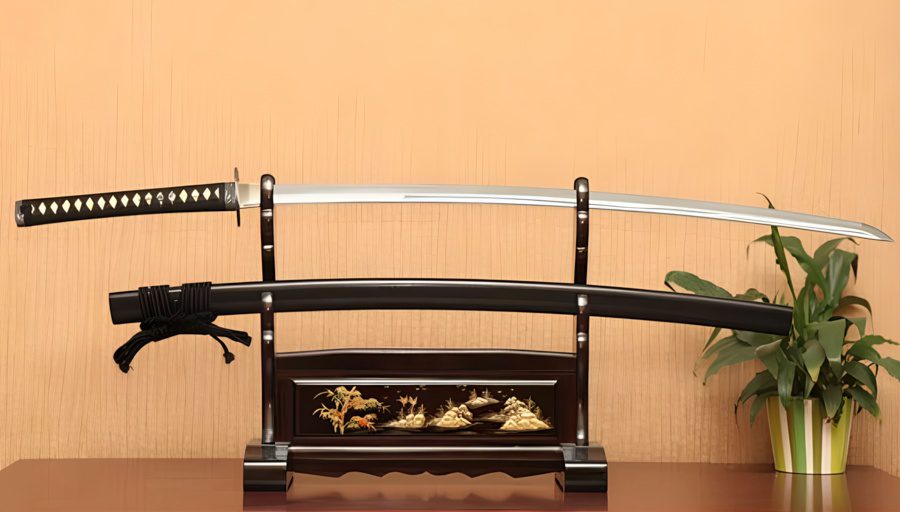
The Katana’s sharp edge needs to be pointing upwards. There are many traditions that might explain this, such as pointing to the heavens and gods. But the simplest is that the Katana was worn with the blade facing up around the 14th/15th centuries, contrasting with the older curved Tachi that was worn facing down.
Worn this way, samurais ensured that the katana was easily accessible and ready to use even while on display. The blade pointing up also helps to better preserve the blade’s edge.
Blade Direction
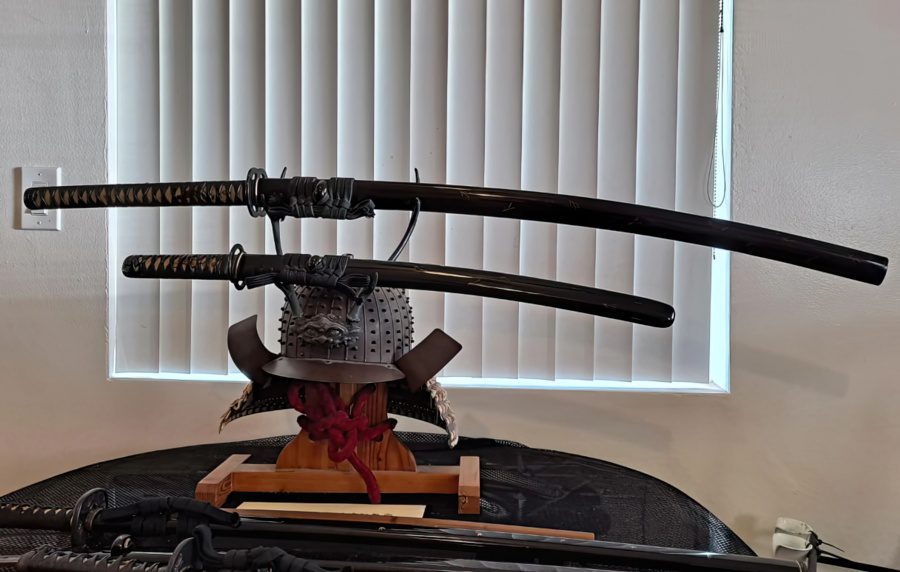
The nagasa (blade) of the Katana should be facing to the right in times of peace, as this means that the samurai will have a harder time unsheathing it, making it more as a work of art instead of a weapon. Comparatively, it points towards the left in troubled times.
An important reason why the blade points to the right with the edge up is so that the omote is easily seen, giving it a better visual flow. This way, the ray skin’s seam is hidden and turned away from the viewer, leaving the beautifully designed sageo (cord wrap) on the scabbard visible.
Handle Direction
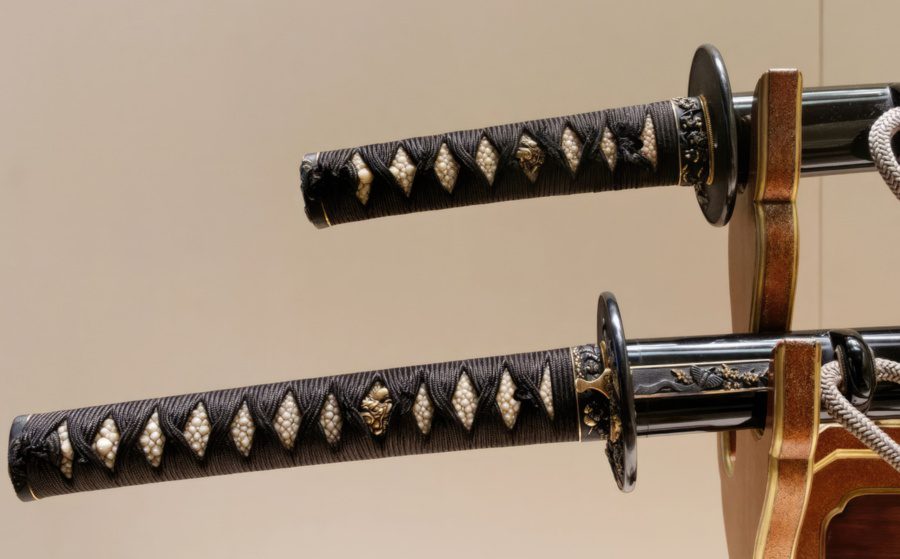
The tsuka (handle) of the Katana needs to be facing left while on display so that the mei (swordsmith’s signature or stamp) is easily seen. This display method also shows guests that the owner does not intend to use the Katana while showing respect. The handle of the Katana only faces the right side during war, allowing the samurai to easily access the sword.
Multiple Swords
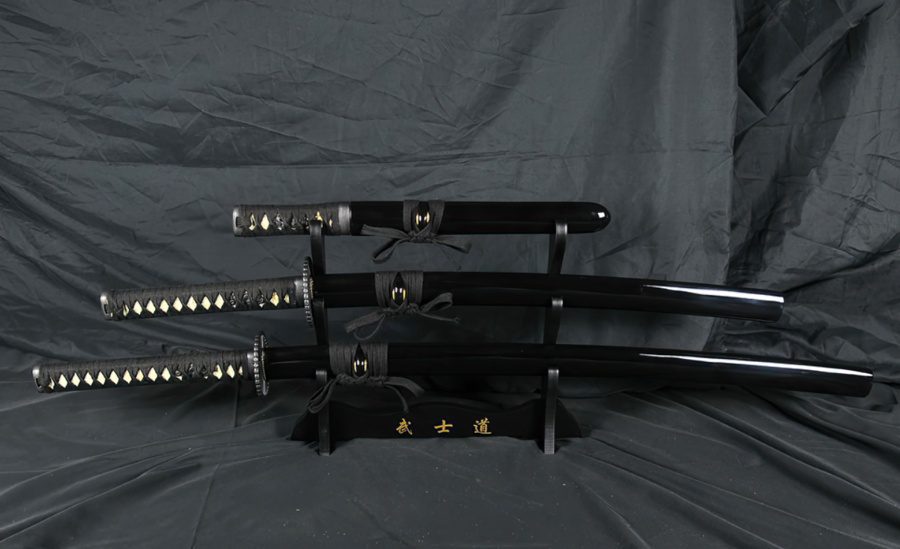
Traditionally, samurai used to carry the daisho, a set of a Katana and Wakizashi. Sometimes, it even included a third, the Tanto. During the peaceful Edo period, it became a standard to display the Daisho set on a sword stand, with the smallest blade highest and the largest at the bottom.
The swords are displayed this way as a samurai would arm oneself with the smallest blade first when they are putting on their robes or armor. Today, bigger swords tend to be displayed at the top for aesthetic reasons and to give the sword stand better stability.
Vertical Stand
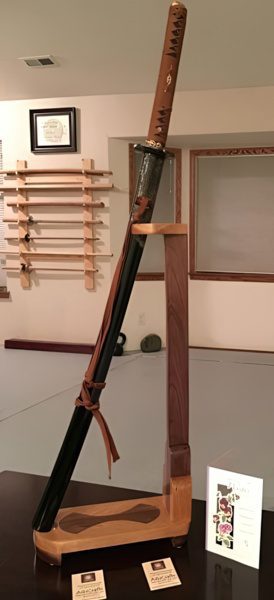
A vertical sword stand allows the blade to be placed in a vertical position, with its handle at the bottom and the edge pointing towards the sword stand, away from the viewers. This is to prevent unnecessary injuries especially if the blade is unsheathed, but also provides better stability.
However, keep in mind that the oil applied on the blade for maintenance purposes will slowly drip down the blade.
Inside a Training Dojo
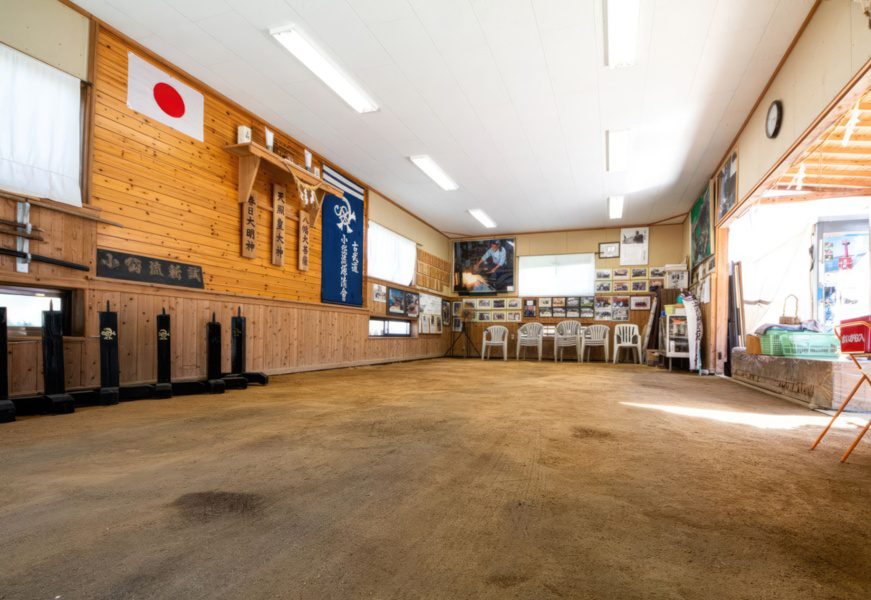
Notice that when entering a dojo for tameshigiri (cutting test) or an iaido match, the blade is kept away from the shonmen (any wall inside the dojo that does not have a door), ensuring that the trainees will always be able to see the blades they train with.
Katana Display Sword Stand – Katana Kake
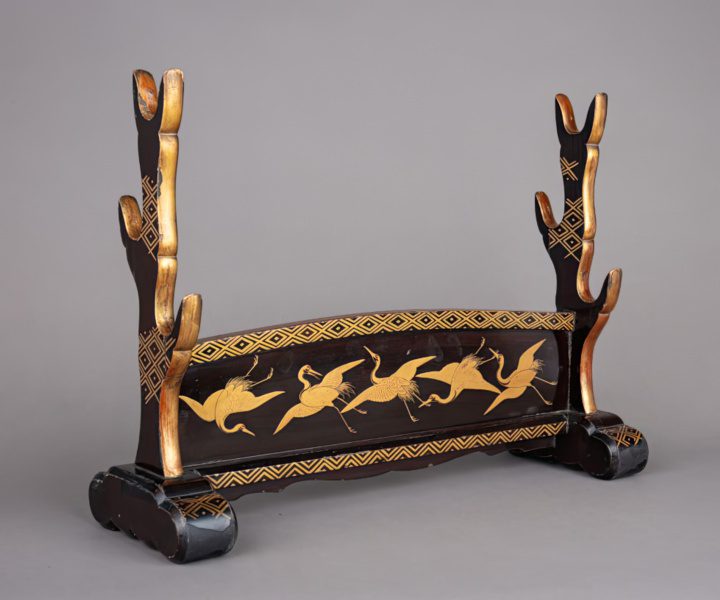
A traditional way to display a Katana would be to use the Japanese sword stand called Katana Kake. Ranging from one to three-tier levels, it can hold the traditional samurai sword sets. It is usually made of wood that is then polished and lacquered.
Samurai would display their swords on the Katana Kake when the blades are not in use. The Katana should be sheathed to prevent damage to both the blade and the sword stand. Some Katana Kake feature a small extension in front for a traditional samurai sword cleaning kit. There are also padded Katana Kake that allows a Katana to be displayed without its scabbard.

